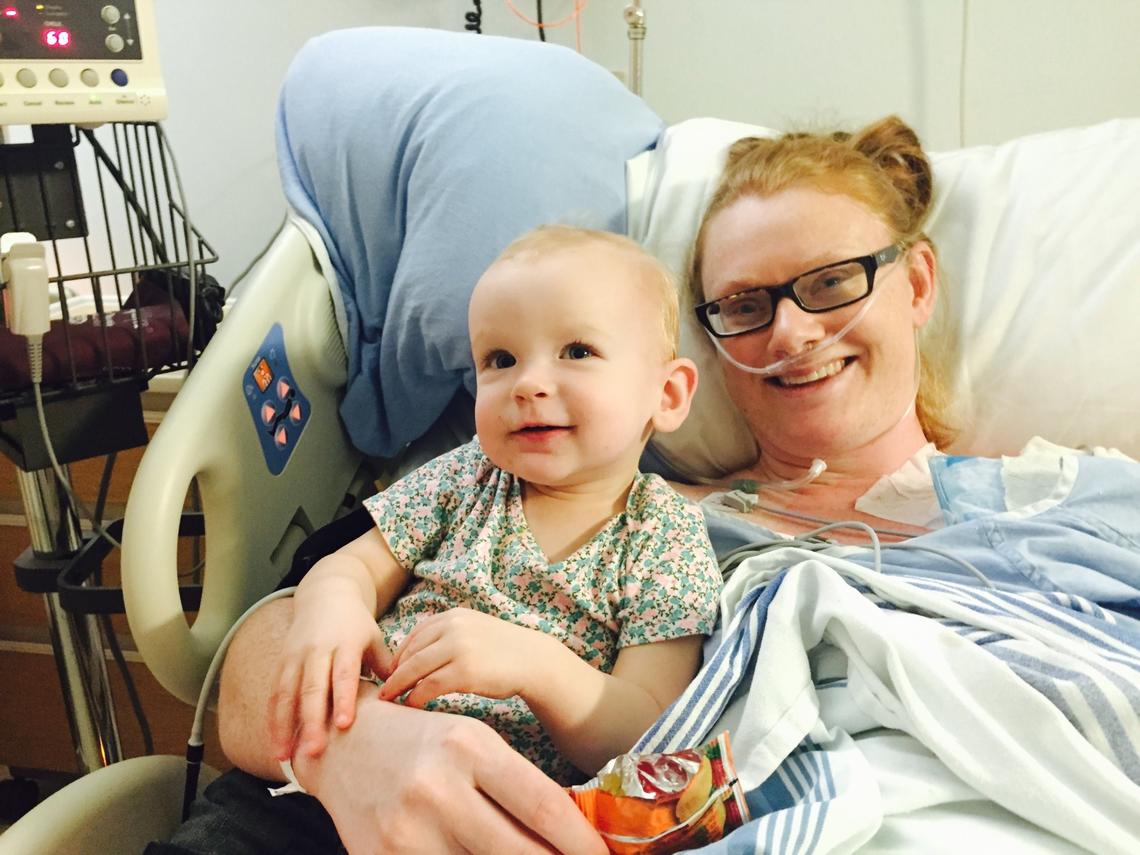July 5, 2021
Congenital heart condition stops athlete

Lauren Klukas never dreamed the hours she spent training as an elite swimmer would one day prove to be harmful. But at age 25, the swimmer and personal trainer dove into the pool and felt so terrible she wasn’t sure she would be able to swim the 25 metres to the other end.
“I thought, ‘I am going to be the first 25-year-old personal trainer who drowns,’” she said. “I felt horrible, but I pushed myself through that practice, thinking I was just out of shape.”
Klukas wasn’t out of shape and more exercise wasn’t the answer.
Rare heart disease
What she didn’t know at the time is that she has a rare, progressive heart disease, arrhythomogenic right ventricular cardiomyopathy (ARVC), that causes fatty, fibrous tissue to replace normal heart muscle. The condition interrupts the heart’s electrical signals and may lead to abnormal and potentially fatal heart rhythms.
Strenuous activity accelerates the breakdown of the heart’s muscle cells in individuals with ARVC, worsening outcomes.
At age 26, Klukas became pregnant with her daughter, Charlotte, and her symptoms, including heart palpitations and a general feeling of unwellness, worsened to the point that Klukas was hospitalized for a week.
It was during this time that she met cardiologist and Cumming School of Medicine (CSM) researcher Dr. Katherine Kavanagh, MD, who diagnosed Klukas. Klukas also learned pregnancy put more strain on her heart and made it harder to treat her ARVC.
It was a scary time. Now 35, Klukas has undergone cardiac ablation, has an implantable cardiac defibrillator (ICD) that provides shocks to her heart if it starts beating abnormally, and is on medication.
In ARVC, often, the symptoms don’t appear until later in life, although Kavanagh notes that ARVC can cause sudden cardiac death, even in young, active people, including athletes.
These are individuals who are doing well in sports and at the top of their game.
“Once individuals know, they try to decrease their physical activity, as strenuous activity causes the disease to progress more quickly,” Kavanagh adds.
Dr. Henry Duff, MD, is part of a CSM research team that has examined the genetic mutation behind Klukas’s ARVC variant. He explains the mutation, which occurs when an individual carries two recessive genes, results in a defect in the connections between the heart’s muscle cells that cause them to break apart when placed under excessive stresses. What is left is a hole between the cells that is replaced by either fat or scar tissue.
The resulting disturbances to the heart’s rhythm patterns and cardiomyopathy (weakness) in both the right and left ventricles of the heart can progress into heart failure, where the heart isn’t strong enough to pump blood efficiently to the body.
“Some people first manifest the condition as symptomatic heart failure, but the scary part is that the first manifestation may be sudden cardiac arrest,” says Duff.
Slow the disease
There is no cure for ARVC, so it is best to slow or stop the progression of the disease through changes in exercise patterns and medications. “If you can save heart muscle, save the cells from dying, then you can really have an impact on the progression rate,” says Duff.
Klukas’ active lifestyle may have contributed to the progression of her condition, but it has been hard for the young mom to go from working out between four and five hours a day to avoiding strenuous activity.
Still, Klukas has remained optimistic and loves to give back. Since her diagnosis, she has published a healthy, meal-planning cookbook, The Complete Plate, to help people who are unable to exercise control their weight. It was shortlisted for a Taste of Canada award in 2018.
I miss exercise terribly. But that has caused me to grow, and I don’t know if I would change my circumstances given the choice.
Klukas also realized there is a huge stigma around heart disease that doesn’t take into consideration the complexity of health concerns. It’s something she hopes to see change.
“My diagnosis has humbled me,” says Klukas. “Being a personal trainer before my diagnosis, I didn’t have empathy for people who didn’t fit my understanding of what being fit and active should be. The irony is, I thought I was doing everything I was supposed to do. I was extremely active, extremely fit and ate well. In the end, thinking I had to work harder almost killed me.”

Lauren Klukas, a young mom, is unable to participate in vigorous exercise.
Courtesy Lauren Klukas
Katherine Kavanagh is a professor in the Department of Cardiac Sciences at the CSM and a member of the Libin Cardiovascular Institute.
Henry Duff is a professor in the departments of Cardiac Sciences and Medicine at the CSM and a member of the Libin Cardiovascular Institute.





